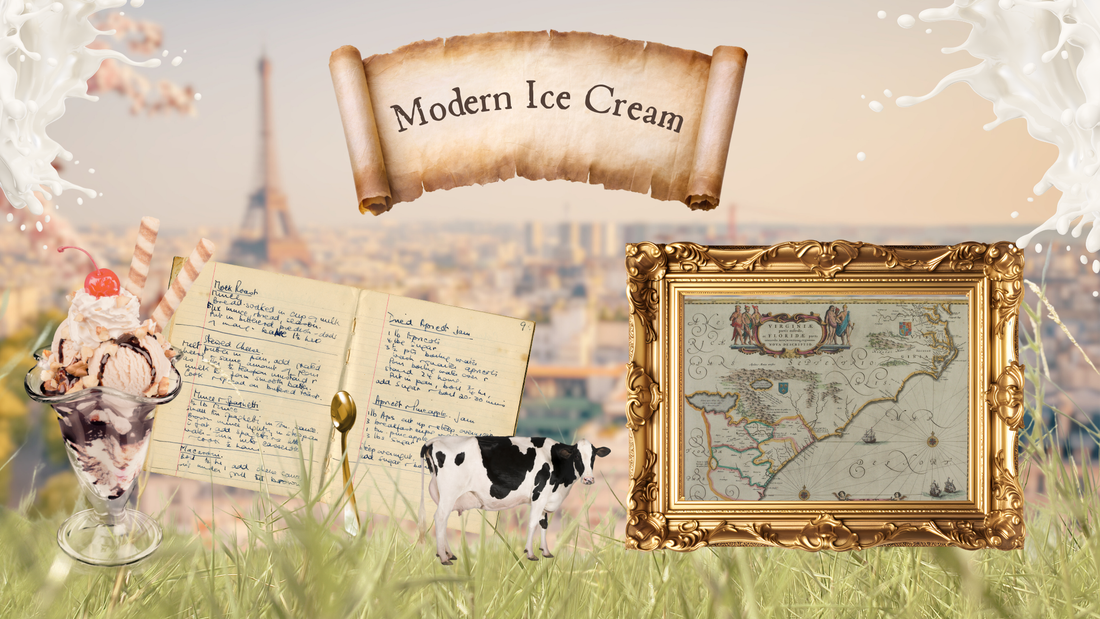
Who Really Invented Ice Cream? A Delicious Mystery Through Time
Ask someone who invented ice cream, and you’ll probably get a shrug—or a confident but incorrect answer. The history of ice cream is a long, winding tale that spans continents, centuries, and cultures. While no single person can claim to have “invented” ice cream, many brilliant minds and moments have shaped it into the frozen dessert we know and love today.
Let’s unravel the sweet story of ice cream’s origins, one scoop at a time.
Ancient Beginnings: Persia, China, and the First Frozen Treats
The earliest hints of ice cream-like concoctions go back over 2,000 years to Persia, where snow was mixed with grape juice to create refreshing iced drinks. Around the same time, Alexander the Great reportedly enjoyed snow flavored with honey and nectar—a fitting snack for a conqueror with a sweet tooth.
By the Tang Dynasty (618–907 CE), Chinese royals were consuming frozen milk desserts made with buffalo milk, flour, and camphor, cooled in ice. Some historians believe these early frozen treats may have influenced future sherbet, sorbet, and modern ice cream versions.
Arab Influence and Sorbet Spreads Across Europe
The Arabs were pioneers in combining milk, sugar, and natural flavorings, and are credited with perfecting early versions of sherbet (or sharbat). These delicately flavored, snow-cooled drinks became a foundation for future ice creams.
As trade routes opened, sorbet spread into Italy, France, and the rest of Europe. The Italians began experimenting with chilled desserts using tools like the coltelli (a scraper used in early ice cream making) and ice houses, while the French refined these recipes into more luxurious frozen desserts.
Italy and France: The Cradle of Gelato and Creamy Innovation
During the 16th century, Italian and French chefs began introducing eggs and cream to frozen recipes, moving toward what we now recognize as gelato or custard-style ice cream.
Catherine de Medici, an Italian noblewoman, married Henry II of France in 1533. She’s often credited (perhaps mythically) with bringing Italian ice cream recipes to Paris, introducing this luxurious sweet treat to the French court. By the 17th century, King Charles II of England served frozen creams at royal banquets.
In Naples, the confectioner Antonio Latini created a milk-based sorbet recipe around 1693. Many food historians consider it the first ice cream recipe to resemble today’s style. Latini’s treat marked a turning point in transforming from sorbet to modern ice cream.
Ice Cream Comes to America: Founding Fathers with a Sweet Tooth
Ice cream arrived in America by the early 18th century, and it didn’t take long for the nation’s elite to fall in love with it. George Washington reportedly spent over $200 on ice cream during the summer of 1790. After tasting vanilla ice cream in France, Thomas Jefferson brought ice cream recipes back to Philadelphia and served them frequently at the White House.
Though ice cream was still a treat for the wealthy (thanks to the cost of ingredients and lack of refrigeration), ice cream parlors began appearing in cities like New York and Philadelphia, laying the groundwork for a nationwide obsession.
Industrial Era: From Handmade to Mass Production
Before electric refrigeration, people relied on ice houses to keep food cold. But in the 19th century, new inventions revolutionized ice cream making. Ice salt machines lowered the freezing point of cream mixtures, making it easier to churn larger quantities.
Then came Jacob Fussell, a milk dealer from Maryland, who, in 1851, opened the first large-scale ice cream maker facility in Baltimore. Fussell used his surplus cream to create affordable ice cream, effectively inventing the ice cream industry and making the frozen dessert accessible to the general public.
Cones, Sodas, and Sundaes: The Golden Age of American Ice Cream
By the late 1800s, ice cream shops and soda fountains were booming across America. Ice cream soda became a symbol of youth culture, and soon after, the ice cream sundae made its debut—possibly to avoid blue laws banning soda sales on Sundays.
In 1904, a vendor ran out of bowls at the St. Louis World’s Fair and teamed up with a waffle maker to serve ice cream in rolled waffles. The ice cream cone was not invented there, but it was undeniably popularized at that event—another scoop of pride for Missouri!
So, Who Invented Ice Cream?
The answer? No one person. Ice cream evolved through centuries of cultural exchange, experimentation, and culinary innovation. From Tang Dynasty China to 17th-century Naples, from Parisian palaces to American parlors, this sweet treat is a delicious symbol of collaboration across time and geography.
Today at Clementine’s
At Clementine’s Ice Cream in St. Louis, we honor these deep roots with every pint of house-made ice cream. We blend centuries-old inspiration with modern flavor innovation, crafting new classics with a nod to the inventors, royalty, and revolutionaries who shaped ice cream into what it is today. Whether you enjoy yours in a cone, a cup, or a sundae, remember: every bite carries a taste of history.
